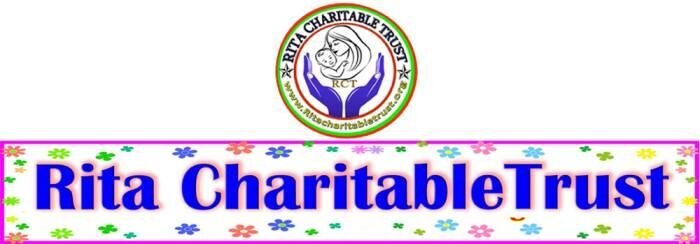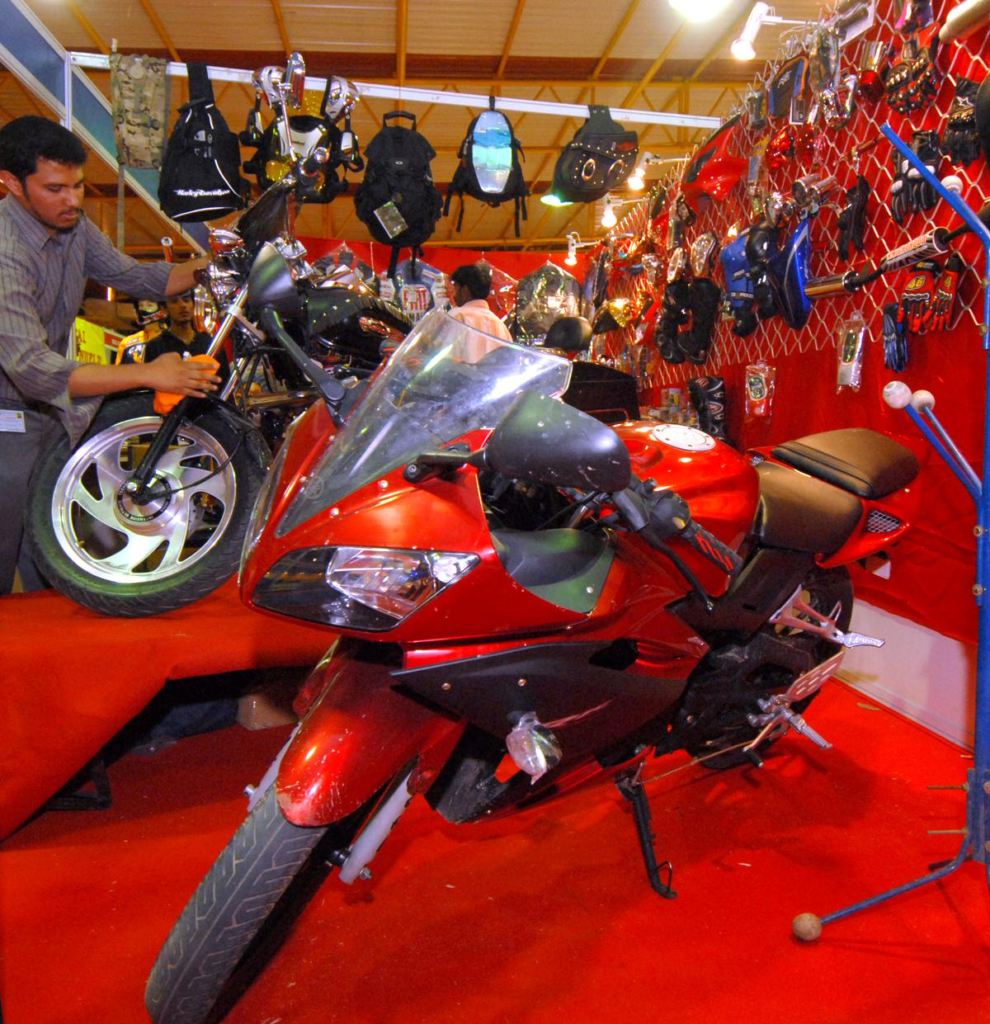Free Quality Controller Course (4Months)
Quality Controller:
Brief Job Description
A Quality Controller is responsible for proper monitoring, testing and inspecting all systems and processes at the dealership. The individual is able to ensure that quality standards are met as specified by the various components/ aggregate manufacturers of the OEM product or service provided by an organisation.
Personal Attributes
An individual on this job must have good communication and interpersonal skills in addition to being a team player, as the job requires coordination with various internal and external stakeholders to ensure maximum quality is maintained. The individual must have a technical bend of mind to understand the technical aspects of various aggregates/ components in the vehicle. The individual should be methodological and systematic in his way of working to ensure various systems and processes quality related aspects in the workshop.
Plan and organise work to meet expected outcomes:
Elements and Performance Criteria
Work requirements including various activities within the given time and set quality standards
To be competent, the user/individual on the job must be able to:
PC1. keep immediate work area clean and tidy
PC2. treat confidential information as per the organisations guidelines
PC3. work in line with organisations policies and procedures
PC4. work within the limits of job role
PC5. obtain guidance from appropriate people, where necessary
PC6. ensure work meets the agreed requirements
Appropriate use of resources
To be competent, the user/individual on the job must be able to:
PC7. establish and agree on work requirements with appropriate people
PC8. manage time, materials and cost effectively
PC9. use resources in a responsible manner
Knowledge and Understanding (KU)
The individual on the job needs to know and understand:
KU1. the organisations policies, procedures and priorities for area of work, role and responsibilities in carrying out that work
KU2. the limits of responsibilities and when to involve others
KU3. specific work requirements and who these must be agreed with
KU4. the importance of having a tidy work area and how to do this
KU5. how to prioritize workload according to urgency and importance and the benefits of this
KU6. the organisations policies and procedures for dealing with confidential information and the importance of complying with these
KU7. the purpose of keeping others updated with the progress of work
KU8. who to obtain guidance from and the typical circumstances when this may be required
KU9. the purpose and value of being flexible and adapting work plans
KU10. how to complete tasks accurately by following standard procedures
KU11. technical resources needed for work and how to obtain and use these
Generic Skills (GS)
User/individual on the job needs to know how to:
GS1. write in at least one language
GS2. read instructions, guidelines/procedures
GS3. ask for clarification and advice from appropriate persons
GS4. communicate orally with colleagues
GS5. make a decision on a suitable course of action appropriate for accurately completing the task within resources
GS6. agree objectives and work requirements
GS7. plan and organise work to achieve targets and deadlines
GS8. deliver consistent and reliable service to customers
GS9. check own work and ensure it meets customer requirements
GS10. anomalies to the concerned persons
GS11. analyse problems and identify work-arounds taking help from
GS12. apply own judgement to identify solutions in different situations

Work effectively in a team:
Elements and Performance Criteria
Effective communication
To be competent, the user/individual on the job must be able to:
PC1. maintain clear communication with colleagues
PC2. work with colleagues
PC3. pass on information to colleagues in line with organisational requirements
PC4.. work in ways that show respect for colleagues
PC5. carry out commitments made to colleagues
PC6. let colleagues know in good time if cannot carry out commitments, explaining the reasons
PC7. identify problems in working with colleagues and take the initiative to solve these problems
PC8. follow the organisations policies and procedures for working with colleagues
PC9. ability to share resources with other members as per priority of tasks
Knowledge and Understanding (KU)
The individual on the job needs to know and understand:
KU1. the organisations policies and procedures for working withcolleagues, role and responsibilities in relation to this
KU2. the importance of effective communication and establishing goodworking relationships with colleagues
KU3. different methods of communication and the circumstances inwhich it is appropriate to use these
KU4. benefits of developing productive working relationships withcolleagues
KU5. the importance of creating an environment of trust and mutualrespect
KU6. whether not meeting commitments, will have implications onindividuals and the organisation
KU7. different types of information that colleagues might need and theimportance of providing this information when it is required
KU8. the importance of problems, from colleagues perspective andhow to provide support, where necessary, to resolve these
Generic Skills (GS)
User/individual on the job needs to know how to:
GS1. complete well written work with attention to detail
GS2. read instructions, guidelines/procedures
GS3. listen effectively and orally communicate information
GS4. make decisions on a suitable course of action or response
GS5. plan and organise work to achieve targets and deadlines
GS6. check that the work meets customer requirements
GS7. deliver consistent and reliable service to customers
GS8. apply problem solving approaches in different situations
GS9. apply balanced judgements to different situations
GS10. apply good attention to detail
GS11. check that the work is complete and free from errors
GS12. get work checked by peers
GS13. work effectively in a team environment

Maintain a healthy,safe and secure working environment:
Elements and Performance Criteria
Resources needed to maintain a safe, secure working environment
To be competent, the user/individual on the job must be able to:
PC1. comply with organisations current health,safety and security policies and procedures
PC2. report any identified breaches in health,safety, and security policies and procedures to the designated person
PC3.. Coordinate with other resources at the workplace to achieve the healthy, safe and secure environment for all incorporating all government norms esp. for emergency situations like fires,earthquakes etc.
PC4. identify and correct any hazards like illness, accidents, fires or any other natural calamity safely and within the limits of individuals authority
PC5. report any hazards outside the individuals authority to the relevant person in line with organisational procedures and warn other people who may be affected
PC6. follow organisations emergency procedures for accidents, fires or any other natural calamity
PC7. identify and recommend opportunities for improving health,safety, and security to the designated person
PC8. complete all health and safety records are updates and procedures well defined
Knowledge and Understanding (KU)
The individual on the job needs to know and understand:
KU1. legislative requirements and organisations procedures for health, safety and security and individuals role and responsibilities in relation to this
KU2. what is meant by a hazard, including the different types of health and safety hazards that can be found in the workplace
KU3. how and when to report hazards
KU4. the limits of responsibility for dealing with hazards
KU5. the organisations emergency procedures for different emergency situations and the importance of following these
KU6. the importance of maintaining high standards of health, safety and security
KU7. implications that any non-compliance with health, safety and security may have on individuals and the organisation
KU8. different types of breaches in health, safety and security and how and when to report these
KU9. evacuation procedures for workers and visitors
KU10. how to summon medical assistance and the emergency services,where necessary
KU11. how to use the health, safety and accident reporting procedures and the importance of these
Generic Skills (GS)
User/individual on the job needs to know how to:
GS1. complete accurate, well written work with attention to detail
GS2. read instructions, guidelines/procedures/rules
GS3. listen and orally communicate information
GS4. make decisions on a suitable course of action or response
GS5. plan and organise work to achieve targets and deadlines
GS6. build and maintain positive and effective relationships withcolleagues and customers
GS7. apply problem solving approaches in different situations
GS8. analyse data and activities
GS9. apply balanced judgements to different situations
GS10. apply good attention to detail
GS11. check that the work is complete and free from errors
GS12. get work checked by peers
GS13. work effectively in a team environment

Perform quality control check:
Elements and Performance Criteria
Manage quality control checks to ensure adheance to quality standards and mandatory certifications
To be competent, the user/individual on the job must be able to:
PC1.. plan, organise and schedule work to quality control through the workshop manager and supervisors/ service advisors
PC2. . determine inspection criteria and work methods for verifying quality of repairs
PC3. . check the following parameters while performing the quality check: visual inspection under hood: – no loose tools – caps & covers installed – fluid levels full – absence of leaks – wires & hoses connected – air filter housing correct visual inspection inside vehicle: – no fingerprints, grease marks, foot prints – steering wheel & door handle wiped and clean – floor mat & seat cover removed complete car wash 2 wheel alignment 4 Wheel Alignment in and out mileage completed service procedures & used parts checked off procedures sheet correctly documented recommended services checked or crossed cause, correction (parts & labour), and repair visual maintenance inspection
PC4.. ensure overall supervision of quality control process through regular: inspection of various equipments and tools (including special tools) inspection of work methods for verifying quality of repairs carried out monitoring of the deviations between what is mentioned on the job card and what is actually carried out check of whether the overall system for service, repair and routine maintained is followed as per the OEM guidelines
PC5. . supervise inspection of auto parts, components and material with precision tools and gauges to avoid spurious or duplicate parts
PC6. . develop and implement quality control programs to improve efficiency of the daily operations
PC7. . ensure that maintenance & service bulletin books are up-to-date and the same has been communicated to all the employees of the workshop
PC8. . determine and inform managers and supervisors in case there pair is not done appropriately and further rework is required
PC9.. provide information to technical support team for resolving quality issues with auto components manufacturers
PC10. . evaluate and recommend the use of reconditioned aggregate, new part or repair or an existing part needs to be done as per the OEM guidelines
PC11. . understand the various ISO and other environmental certifications (both mandatory by the OEM or optional for a few workshops) including: ISO/TS 16949 – specifies the quality system requirements for the design/development, production, installation and servicing of automotiverelated products ISO 9000 series – series of quality management system standards for delivering quality products/services to the customers ISO 10002 – relevant to any organization that wishes to exceed customer expectations ISO 14001 criteria for an effective EMS (environment management system) Or any other certification as may be desired from time to time to ensure quality aspects in the workshop like Kaizen
Knowledge and Understanding (KU)
The individual on the job needs to know and understand:
KU1. standard operating procedures of the organization/ dealership to maintain the overall systems, process and quality aspects in the workshop
KU2. the terms and conditions related to quality check and auditing procedure as prescribed by the OEM/ auto component manufacturer
KU3. safety requirements for equipment and auto components/ aggregates as prescribed by the OEM
KU4. documentation requirements for each procedure carried out as part of roles and responsibilities regarding the service, maintenance and repair across various job roles in a workshop as specified by the respective OEM
KU5. organisational and professional code of ethics and standards of practice
KU6. safety and health policies and regulations for the workplace as well as for automotive trade in general (e.g. safe practices while working in pits/ under vehicles)
KU7. the technical specifications of various OEM vehicular products as well as those manufactured by the competitors
KU8. the basic technology used in the overall functioning of various components/ aggregates (especially the core aggregates like engine, gear box, propeller shaft, clutch and brake assembly, transmission systems, axles etc.)
KU9. how to check the following parameters while performing the quality check: visual inspection under hood: – no loose tools – caps & covers installed – fluid levels full – absence of leaks – wires & hoses connected – air filter housing correct visual inspection inside vehicle: – no fingerprints, grease marks, foot prints – steering wheel & door handle wiped and clean – floor mat & seat cover removed complete car wash 2 wheel alignment 4 Wheel Alignment in and out mileage completed service procedures & used parts checked off procedures sheet correctly documented recommended services checked or crossed cause, correction (parts & labour), and repair
KU10. visual maintenance inspection the technical aspects communicated from Service, Product planning or Quality control, R&D departments of the OEM (through various service circulars) is communicated to the workshop team though regular meetings to ensure proper adherence
KU11. how to communicate and inform managers/ supervisors on the quality aspects of the repair carried out to minimise rework
KU12. the technical and quality aspects mentioned in the maintenance& service bulletin books as released by the respective OEM
KU13. differentiate between the original and spurious auto parts, components and materials along with precision tools and gauges
KU14. the various quality control programs and its lag and lead indicators to ensure an improvement in the daily operations
KU15. implications of ISO and other environmental certifications (both mandatory by the OEM or optional for a few workshops) including: ISO/TS 16949 – specifies the quality system requirements for the design/development, production, installation and servicing of automotiverelated products ISO 9000 series – series of quality management system standards for delivering quality products/services to the customers ISO 10002 – relevant to any organization that wishes to exceed customer expectations ISO 14001 criteria for an effective EMS (environment management system)
KU16. Or any other certification as may be desired from time to time to ensure quality aspects in the workshop like Kaizen
Generic Skills (GS)
User/individual on the job needs to know how to:
GS1. communicate information and ideas in writing so others will understand
GS2. record and document the systems and processes affecting the overall service, maintenance and repair of vehicles in the workshop
GS3. write in at least one language
GS4. read work orders, specifications etc. related to the systems, processes and other quality aspects related to the service, maintainance and repairs in the workshop
GS5. read and understand various service & maintainance circulars issued by the OEM/ auto components manufacturer
GS6. read finer details, implications and other financial aspects of ISO and other environmental certifications (both mandatory by the OEM or optional for a few workshops)
GS7. interact with the customers to understand any gaps in the overall service quality levels in the workshop
GS8. interact with superiors and other support staff function to ensure higher levels of service quality is maintained
GS9. interact with external stakeholders (esp. the external quality auditors and ISO certificate providers or any other external agency) regarding the overall maintenance of the quality services in the workshop
GS10. interact with team members to work efficiently
GS11. analyse information from periodic inspections done and evaluate results to optimise the process ensuring quality and timely services
GS12. decide the optimised process at the workshop to ensure smooth operations
GS13. analyse all certifications available regarding various aspects of the quality and choose the most appropriate one
GS14. plan and organise the daily operations at the workshop in the morning to ensure the smooth flow of service & maintenance of the vehicles
GS15. plan the periodic inspections to monitor the overall quality levels of various systems and processes with close coordination with other stakeholders
GS16. ensure that the customers requirements are assessed and service provided adheres to the strict quality parameters as prescribed by the organisation or the OEM
GS17. ensure that the various systems and processes are aligned with the overall customer satisfaction and are not leading to time and cost overruns for the service, maintenance and repairs in the vehicle
GS18. identify complex problems and review related information to develop and evaluate options and implement solutions keeping the overall quality in mind
GS19. ensure all system related issues are solved in the most optimised manner as per the OEM guidelines
GS20. analyse available information and evaluate results to choose the best solution in case of any conflict due to elaborate systems and processes
GS21. evaluate the complexity of tasks to be performed to maintain the overall quality in workmanship in the workshop and determine its feasibility with respect to cost and time taken
GS22. use logic and reasoning to identify the strengths and weaknesses of alternative solutions, conclusions or approaches to problems
GS23. evaluate the information gathered from regular inspections to take appropriate action to ensure adherence to the quality systems and processes
Assessment Guidelines:
- Criteria for assessment for each Qualification Pack will be created by the Sector Skill Council. Each Element/ Performance Criteria (PC) will be assigned marks proportional to its importance in NOS. SSC will also lay down proportion of marks for Theory and Skills Practical for each Element/ PC.
- The assessment for the theory part will be based on knowledge bank of questions created by the SSC.
- Assessment will be conducted for all compulsory NOS, and where applicable, on the selected elective/option NOS/set of NOS.
- Individual assessment agencies will create unique question papers for theory part for each candidate at each examination/training center (as per assessment criteria below).
- Individual assessment agencies will create unique evaluations for skill practical for every student at each examination/ training center based on these criteria.
- To pass the Qualification Pack assessment, every trainee should score the Recommended Pass % aggregate for the QP.
- In case of unsuccessful completion, the trainee may seek reassessment on the Qualification Pack.







